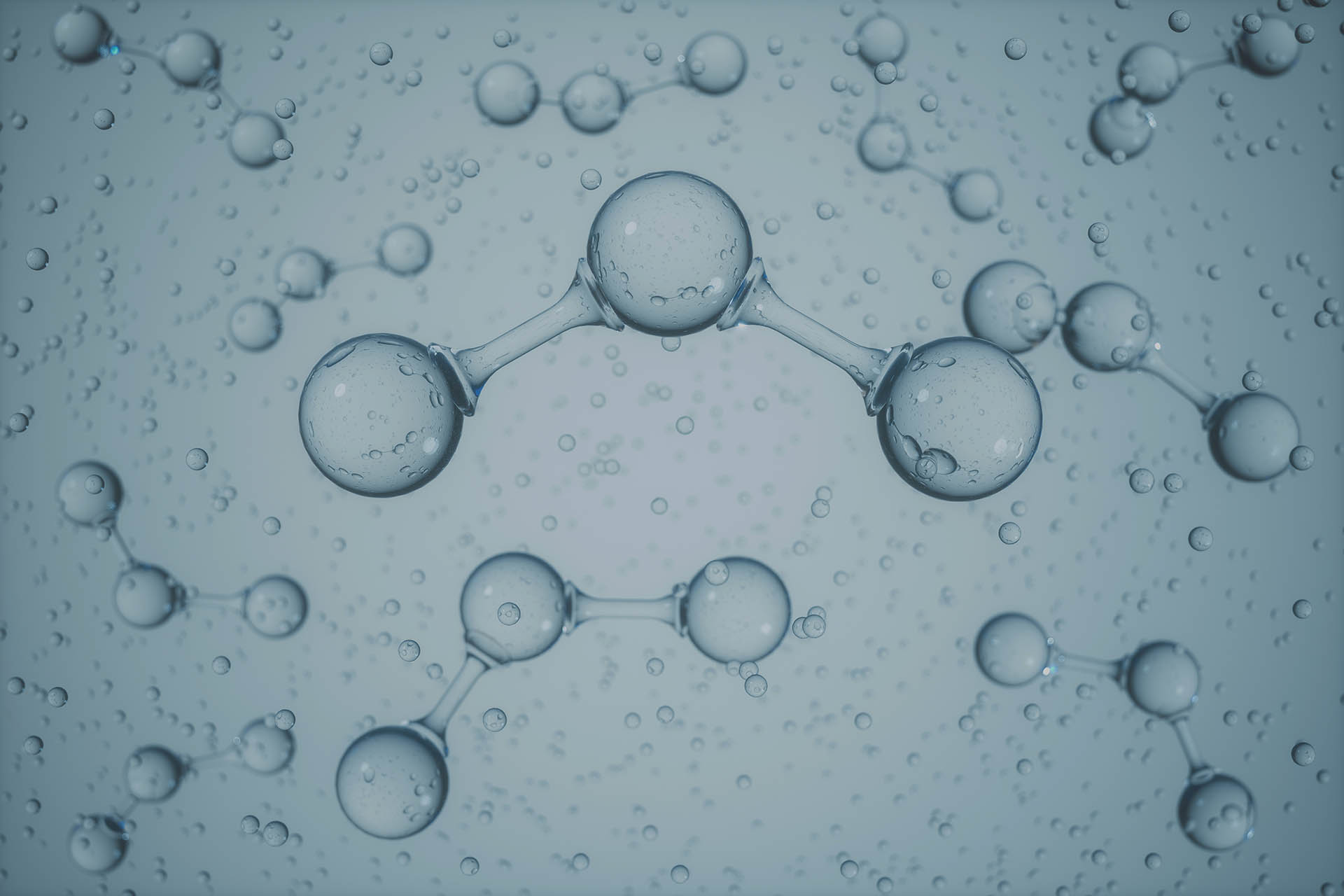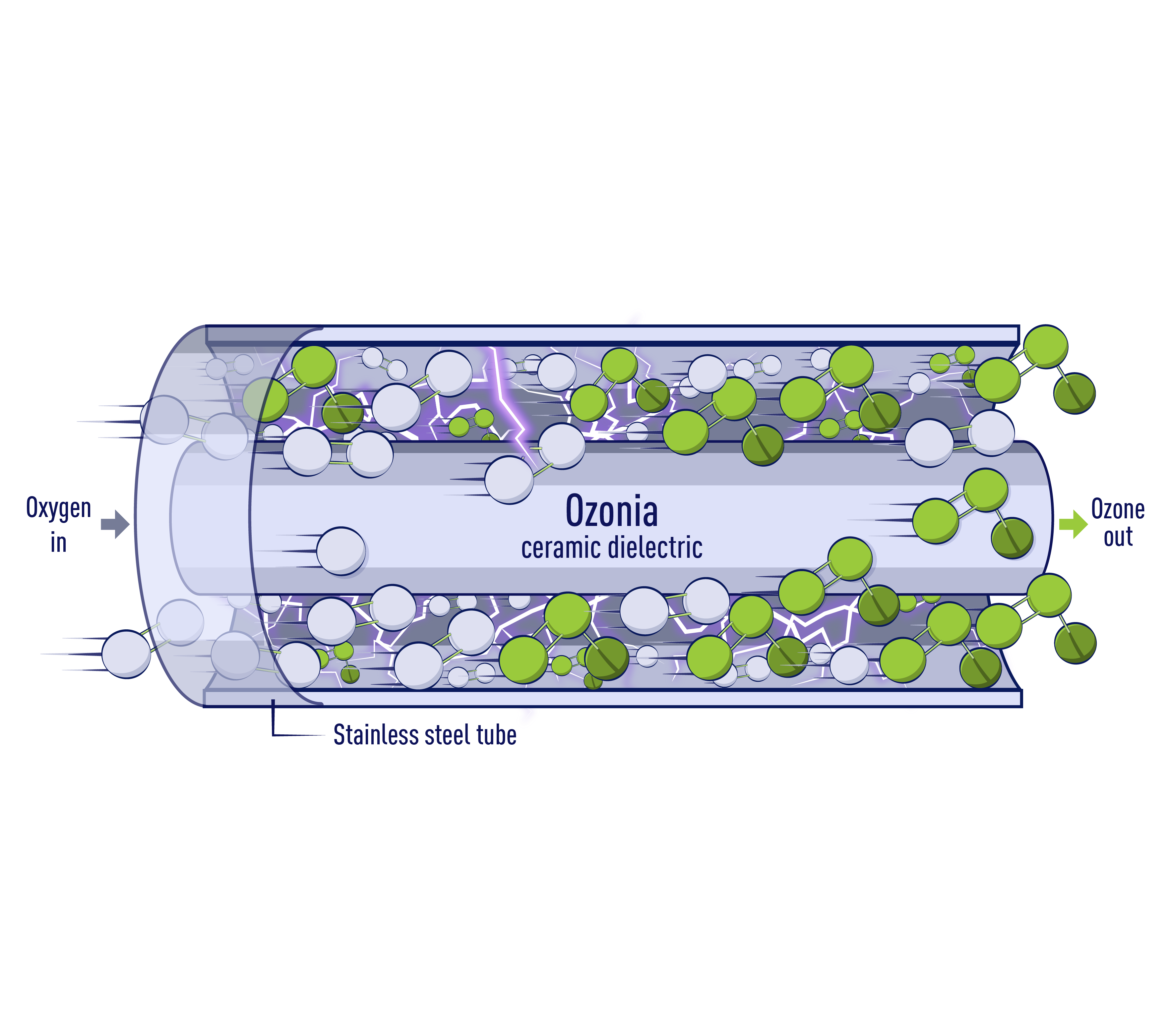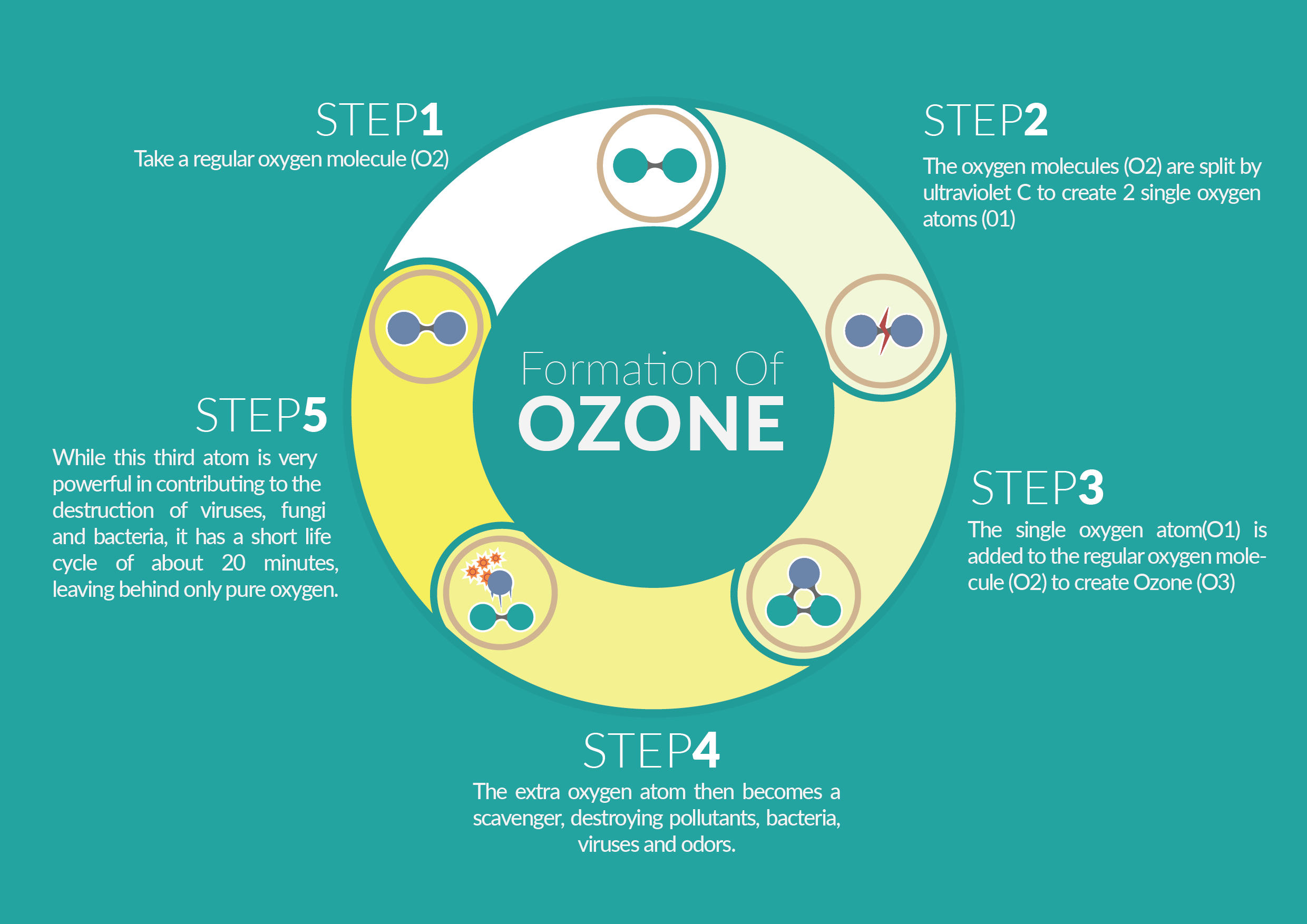You’ve probably heard about ozone before, right? Maybe you remember it from science class or those environmental discussions about the ozone layer. But did you know that ozone isn’t just about protecting our atmosphere? It’s also a powerful tool used in ozonation, a process that’s quietly revolutionizing the way we purify water and air. This isn’t just some fancy buzzword; ozonation is a game-changer in industries ranging from healthcare to food production. So, let’s dive in and explore what makes this process so special.
Ozonation is all about harnessing the power of ozone, a molecule made up of three oxygen atoms. Unlike regular oxygen (O2), ozone (O3) is highly reactive and has some serious disinfecting properties. Think of it as nature’s own cleaning crew, but turbocharged. This process is used in a variety of applications, from purifying drinking water to sterilizing medical equipment. If you’re curious about how it works and why it matters, you’re in the right place.
Now, here’s the kicker: ozonation isn’t just another trendy solution. It’s backed by science, proven by real-world results, and trusted by industries that demand the highest standards of cleanliness and safety. In a world where contamination and pollution are constant concerns, ozonation offers a sustainable and effective way to tackle these challenges. Ready to learn more? Let’s get into the nitty-gritty.
- Fameblogs Marvins Peel Emails Address A Deep Dive Into The World Of Digital Influence
- Hikaru Nagi About The Rising Star Of Anime And Voice Acting
What Exactly is Ozonation?
Alright, let’s break it down. Ozonation is the process of introducing ozone gas into a system to achieve specific goals, whether it’s disinfection, deodorization, or purification. The magic happens when ozone, with its extra oxygen atom, reacts with organic and inorganic materials. This reaction breaks down harmful substances, leaving behind clean water or air. It’s like having a microscopic cleanup crew that works fast and leaves no trace.
Here’s the science part: Ozone (O3) is created by splitting oxygen molecules (O2) into individual oxygen atoms. These lone atoms then combine with intact oxygen molecules to form ozone. This process can happen naturally, like during lightning strikes, or artificially, using specialized equipment called ozone generators. Once generated, ozone is introduced into the target system, where it gets to work doing its thing.
One of the coolest things about ozonation is its versatility. It can be used in water treatment plants, swimming pools, wastewater management, and even in the food industry. And guess what? It doesn’t leave behind harmful byproducts like some other purification methods. Instead, after it’s done its job, ozone naturally breaks down into regular oxygen (O2), which is totally safe for the environment. Pretty neat, huh?
- Unveiling The Wolverine Name The Ultimate Guide To Its Origin Meaning And Popularity
- How To Biwire Speakers A Comprehensive Guide For Audiophiles
Applications of Ozonation
Ozonation in Water Treatment
Let’s talk water. Ozonation is a go-to method for treating drinking water because it’s super effective at killing bacteria, viruses, and other nasty microorganisms. Unlike chlorine, which can form harmful byproducts called trihalomethanes, ozone leaves no chemical residue. This makes it a safer option for purifying water that people will eventually drink. Cities around the world are adopting ozonation as part of their water treatment processes, ensuring cleaner and healthier water for their citizens.
Ozonation in Air Purification
But wait, there’s more! Ozonation isn’t just for water. It’s also a powerful tool for purifying the air. In enclosed spaces like hospitals, offices, and even homes, ozone can eliminate odors, allergens, and airborne pathogens. Imagine walking into a room that smells fresh and clean, without the use of harsh chemicals. That’s the power of ozonation. Plus, it’s great for industries like hospitality, where maintaining a pleasant and hygienic environment is crucial.
Ozonation in Food Processing
Food safety is a big deal, and ozonation plays a key role here too. In the food industry, ozone is used to sanitize equipment, clean surfaces, and even treat produce. It helps extend the shelf life of fruits and vegetables by reducing microbial contamination. And because it doesn’t leave any chemical residues, it’s perfect for organic and natural food production. Farmers and processors are increasingly turning to ozonation as a way to meet consumer demand for safer and healthier food options.
Benefits of Ozonation
1. Environmental Friendliness
One of the biggest advantages of ozonation is its eco-friendly nature. Unlike traditional purification methods that rely on chemicals, ozonation uses a natural element—oxygen—to do its job. When ozone breaks down, it simply reverts to oxygen, leaving no harmful residues behind. This makes it a sustainable choice for industries looking to reduce their environmental impact.
2. High Efficiency
Ozonation is incredibly efficient at eliminating a wide range of contaminants. Whether it’s bacteria, viruses, or organic pollutants, ozone gets the job done quickly and effectively. In fact, it’s been shown to be more powerful than chlorine in terms of disinfection. This means less time and fewer resources are needed to achieve the desired results.
3. Versatility
As we’ve already mentioned, ozonation can be applied in various fields, from water treatment to air purification to food processing. Its versatility makes it a valuable tool for businesses and organizations across different sectors. Whether you’re dealing with industrial wastewater or trying to keep a hospital room germ-free, ozonation has got you covered.
Challenges and Limitations
Of course, no solution is perfect, and ozonation is no exception. One of the main challenges is the cost of implementing ozone systems. High-quality ozone generators can be expensive, and maintaining them requires specialized knowledge. Additionally, improper use of ozone can pose health risks, as high concentrations can be harmful to humans and animals.
Another limitation is that ozone has a relatively short lifespan. Once it’s generated, it starts breaking down almost immediately. This means it needs to be used on-site and can’t be stored for long periods like some other chemicals. However, these challenges are being addressed through ongoing research and development, making ozonation more accessible and safer to use.
How Ozonation Works: A Step-by-Step Guide
Step 1: Ozone Generation
The first step in the ozonation process is generating ozone gas. This is typically done using an ozone generator, which splits oxygen molecules into individual atoms and then combines them with intact oxygen molecules to form ozone. The generator needs a clean and dry air supply to function properly, as moisture can interfere with the process.
Step 2: Ozone Introduction
Once the ozone is generated, it’s introduced into the target system. In water treatment, this might involve bubbling ozone through the water. In air purification, ozone might be dispersed into the air using a fan or blower system. The key is ensuring that the ozone is evenly distributed throughout the system to maximize its effectiveness.
Step 3: Reaction and Decomposition
As the ozone interacts with contaminants, it reacts with them, breaking them down into harmless substances. For example, in water, ozone can oxidize organic matter, removing color, taste, and odor. After the reaction is complete, the remaining ozone naturally decomposes into oxygen, completing the cycle.
Case Studies: Real-World Success Stories
Case Study 1: Municipal Water Treatment
In a city in Europe, ozonation was implemented as part of the municipal water treatment process. The results were impressive: water quality improved significantly, and the incidence of waterborne diseases decreased. Residents reported that the water tasted better and smelled fresher. This case study highlights the effectiveness of ozonation in providing clean and safe drinking water on a large scale.
Case Study 2: Food Industry Application
A major food processing company in the U.S. adopted ozonation to sanitize their equipment and treat their produce. They found that ozonation not only improved the safety of their products but also extended their shelf life. Customers were happy with the fresher taste of the fruits and vegetables, and the company saw a boost in sales. This example demonstrates how ozonation can benefit businesses while also improving consumer satisfaction.
Future of Ozonation
As technology continues to advance, the future of ozonation looks bright. Innovations in ozone generation and delivery systems are making the process more efficient and cost-effective. Researchers are also exploring new applications for ozonation, such as in the treatment of pharmaceutical wastewater and the sterilization of medical devices. With growing concerns about environmental sustainability and public health, ozonation is poised to play an even bigger role in shaping the future.
Expert Insights and Industry Perspectives
According to experts in the field, ozonation is more than just a trend—it’s a necessity. Dr. Emily Carter, a leading researcher in water treatment technologies, says, “Ozonation offers a unique combination of effectiveness, safety, and sustainability that few other methods can match.” Industry leaders agree, with many companies investing heavily in ozone systems to stay ahead of the curve.
Conclusion
Ozonation is a powerful and versatile process that’s transforming the way we purify water and air. From municipal water treatment to food processing, its applications are wide-ranging and its benefits are undeniable. While there are challenges to overcome, ongoing advancements in technology are making ozonation more accessible and safer to use. As we continue to face environmental and health challenges, ozonation stands out as a solution that delivers real results.
So, what’s next? If you’re interested in learning more about ozonation or considering implementing it in your business, now’s the time to take action. Share this article with your network, leave a comment with your thoughts, and explore other resources to deepen your understanding. Together, we can harness the power of ozone to create a cleaner, healthier world.
Table of Contents
- What Exactly is Ozonation?
- Applications of Ozonation
- Benefits of Ozonation
- Challenges and Limitations
- How Ozonation Works: A Step-by-Step Guide
- Case Studies: Real-World Success Stories
- Future of Ozonation
- Expert Insights and Industry Perspectives
- Conclusion



Detail Author:
- Name : Mallie Bergstrom
- Username : pfunk
- Email : nathaniel09@sawayn.com
- Birthdate : 1992-09-30
- Address : 83285 Mante Harbor Apt. 468 South Hilda, NH 36519
- Phone : 423.276.5725
- Company : Pfannerstill Inc
- Job : Real Estate Association Manager
- Bio : Alias est voluptatem excepturi et pariatur consequatur. Provident amet dolorum accusantium officiis voluptas qui beatae. Nisi laudantium soluta ut perspiciatis iste eius. Et impedit aliquam nostrum.
Socials
twitter:
- url : https://twitter.com/deanna_nikolaus
- username : deanna_nikolaus
- bio : Harum voluptatem aspernatur aliquam quo non. Numquam sed velit sit est aut quod.
- followers : 6716
- following : 2111
tiktok:
- url : https://tiktok.com/@dnikolaus
- username : dnikolaus
- bio : Magni rem non iure ducimus earum maiores.
- followers : 4057
- following : 909
instagram:
- url : https://instagram.com/deanna_nikolaus
- username : deanna_nikolaus
- bio : Ea aliquid quos deserunt itaque ut. Non est ipsam sed perspiciatis doloribus. Eos omnis qui omnis.
- followers : 3831
- following : 747
